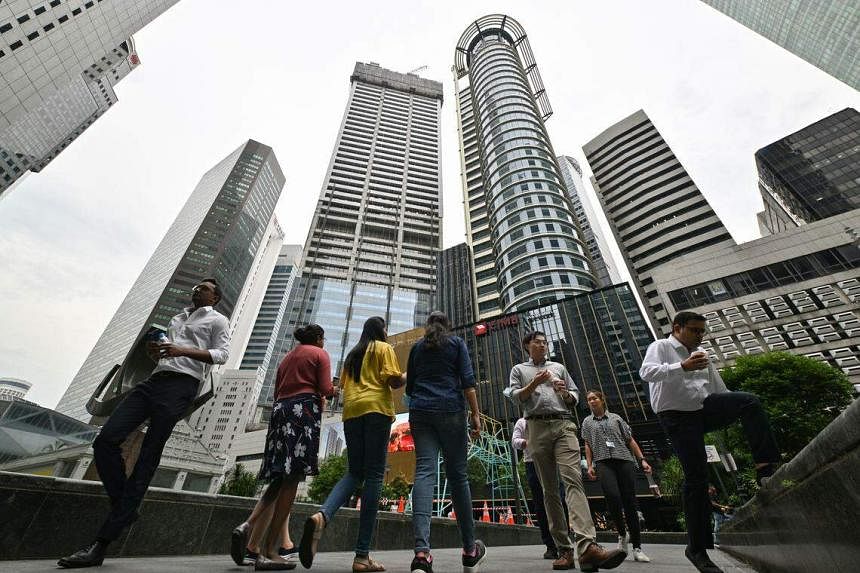SINGAPORE – Companies in Singapore are scrambling to hire technology talent, even as the global tech industry grapples with flagging growth and makes big job cuts. Nearly seven in 10 of all vacancies in information and communications were new positions – the highest level across all sectors for the third year running – the latest report by the Ministry of Manpower (MOM) on annual job vacancies for 2022 showed.
This demonstrates the restructuring that has taken place in the sector, MOM said in its report released on Thursday. Overall, the number of job vacancies declined for the third consecutive quarter ended December, to 104,500, said MOM. However, this level remained high compared with the 51,100 in December 2019 before the Covid-19 pandemic, the ministry noted.
While the total number of job vacancies rose in 2022, the proportion of vacancies unfilled for at least six months declined from 35 per cent in 2021 to 27 per cent in 2022 as border restrictions and safe management rules were lifted.
Non-PMET vacancies registered a sharper decline, compared with vacancies for professional, managerial, executive and technical (PMET) jobs, as employers were able to hire foreign workers to backfill those vacancies. But MOM noted that the number of vacancies for new positions in 2022 rose compared with 2019 as businesses continued to expand or restructure.
Going forward though, job vacancies are expected to moderate, as while hiring sentiments remain positive, global economic headwinds will weigh on labour demand.
For 2022, tech jobs that saw particularly robust demand included software, Web and multimedia developers. This job function ranked second after management executives for PMET roles with the most vacancies recorded in 2022.
Other tech roles companies were keen to fill included software and applications managers, which came in sixth, and systems analysts in eighth place, in terms of vacancies.
These positions typically require applicants to possess strong technical skills such as knowledge of programming languages like Java, C++ or Python, and some experience or knowledge of the work processes involved, the report said. Last year also saw a rise in demand for network infrastructure and support roles such as IT support technicians and IT infrastructure specialists.
There was also a stable and large pool of job openings for business development and sales positions, such as management executives, commercial and marketing sales executives, and business development managers.
“These jobs have remained in the top 10 PMET vacancies since 2020. They remain crucial in supporting businesses in their venture to new growth areas,” said MOM.
The ministry also said that the number of vacancies for PMETs in 2022 was almost double that in 2019. “For PMET roles that were difficult to fill, the main reasons cited by employers were unattractive pay, lack of specialised skills and lack of necessary work experience, particularly for positions requiring specialised, technical knowledge.”
For non-PMET positions that were difficult to fill, employers commonly indicated reasons such as a physically strenuous job nature, and a non-conducive work environment, said MOM.
It added that some sectors, such as transportation and storage and accommodation and food services continued to see a higher share of vacancies unfilled for at least six months.
However, the expansion of progressive wages – a wage ladder tied to productivity and skill improvements – to jobs in those sectors, such as for drivers, is expected to entice new joiners, said MOM.
There was also a rise in openings for those practising skilled trades, such as welders and pipe fitters.
“Efforts to professionalise these skilled trades will help to redesign these jobs, making them more attractive in wage and career prospects to resident job seekers,” the ministry said.
MOM also found that academic qualifications were not the main determinant in hiring for 74 per cent of vacancies in 2022.
“This proportion has been on the rise, increasing from 67 per cent in 2017 to 73 per cent in 2021, largely reflecting the trend among PMET jobs,” said the ministry.
“For PMET vacancies where qualifications were not the main determinant, skills and work attitude of the job applicant were the key considerations. Should candidates possess the minimum required qualifications, their skills and work attitude would take precedent,” it added. “Hence, having relatively higher qualifications does not mean a candidate is automatically considered ahead of their counterpart with lower qualifications.”
The proportion of vacancies which involved work that can be done remotely fell from 31 per cent in 2021 to 21 per cent in 2022.
“This reflects a normalisation of remote work trends as more workplace activities resumed on-site when pandemic-related restrictions eased in 2022,” said MOM.


